
Jan at Ermelo (Photo – Ridehesten)
Danish horseman, Jan Pedersen has been the president of the World Breeding Federation for Sport Horses since 1999, a remarkable feat given the wide-ranging developments in the world of sport horse breeding in the last twenty years. Jan took over the presidency from Gert Jan van Muijen, the same year that HRH Princess Benedikte of Denmark succeeded HRH Princess Anne as patron of the WBFSH.
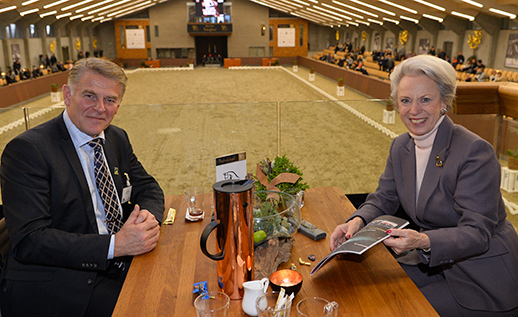
(Photo – Ridehesten)
I caught up with Jan at the World Young Dressage Horse championships in Ermelo…
It’s been ten years since I interviewed you last, what do you think are the most important developments for the WBFSH in that decade?
“I think that the studbooks are much more supportive now than they were at the beginning. In the beginning they were a little bit afraid that the World Breeding Federation would get too powerful – now I think everybody realises that it is important to cooperate. Everyone recognizes that horse breeding has become an international affair, and therefore it has to be internationally organized. That is one clear development.”
“One example, ten years ago we were working with the Inter-Stallion Project, and at the time, some studbooks were afraid of the transparency, but now everybody realises that it is the way to go forward.”
I read that report and I was thinking about it when I came here to the Young Dressage Horse Championships in Ermelo, okay we can look at the marks and then analyze the influence of the stallions and stallion lines, but how do we deal with the rider factor? Even theoretically, how do we deal with the fact that this horse is ridden by Charlotte Dujardin, that one ridden by me?
“That is what is possible with our new system, you take that into account. The rider effect, also the mare line, not only the stallion but who is the mother of this horse, everything will be taken into account, along with the rider effect. I don’t know now how we are going to manage it, but it will be taken into account.”
In England, there is a very sophisticated statistical analysis done by EquiRatings on the sport of eventing, so they know in advance, this horse is likely to get an X score in the dressage, but if this horse, and all the others, is say, six marks better than their usual scores, then the results are re-assessed to take into account a Ground Jury that is being unusually generous. That works because they are working on a more-or-less level playing field – but how do we take into account the fact that a 1.60m showjumping class in Germany, is very different from a 1.60m track in Australia, the degree of difficulty is way higher in the German example…
“That too will have to be taken into account, and we will be working on that, it is complicated, it is going to be very expensive also, and it is not going to happen tomorrow.”
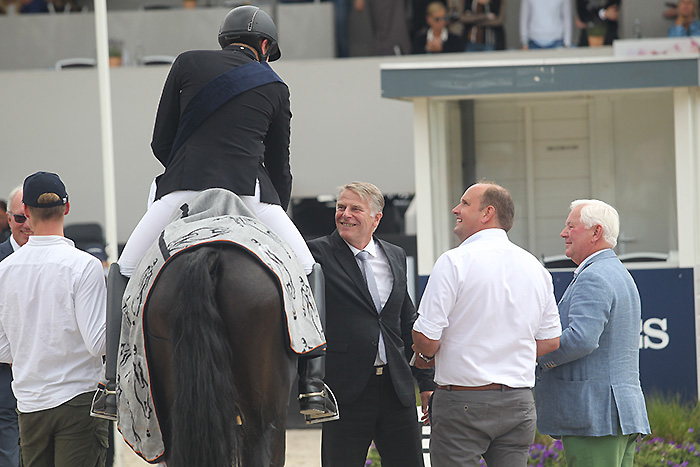
Jan congratulates Fredric Wandres who rode Zucchero to the six-year-old championship, on his right is Hannes Brüning, who with his father, Hans-Heinrich, bred the horse and to the right, Ulli Kasselmann, who sold the stallion to his present owners…
(Photo – Ridehesten)
You say that studbooks are now more supportive of the WBFSH, but is that because the studbooks now feel threatened? Ten years ago someone said, I am a Hanoverian breeder and I will always register my horses with the Hanoverian Verband, now breeders go to whatever book suits them?
“I think that is part of the explanation. Years ago, when I was young, the breeders would be very loyal to their studbook, a Hanoverian breeder would only support the Hanoverian studbook, that has changed a lot. Today the breeders shop around. Which studbook is cheaper? Which studbook has the best auctions? People are not loyal to one studbook any more, so I think we are going to see that the number of studbooks is going to be reduced. That is part of the reason that the studbooks are more supportive to the World Breeding Federation.”
Even at this show, if we look at the new World Champion Six-Year-old, Zucchero, bred by one of Hanover’s well-known breeders, Hans-Heinrich Brüning, but registered Oldenburg because at the time, Zonic was not approved for Hanover – that would not have happened fifteen years ago…
“No, it has changed a lot, you see a Hanoverian horse, registered with Oldenburg and ridden by a Danish rider, for instance, it has changed a lot.”
The other thing that has changed, is that once in the past we would say of certain breeding organisations, ‘oh that’s not really a studbook, it is just a registry’ but now when you look at say the Anglo European registry, the number of horses registered with them, that are performing at the top level in competition, is quite high…
“I think it has to do with the fact that it is uncomplicated and it’s cheap.”
Is that the way of the future?
“I don’t think so… at least I hope not, because that would not bring the breeding forward.”
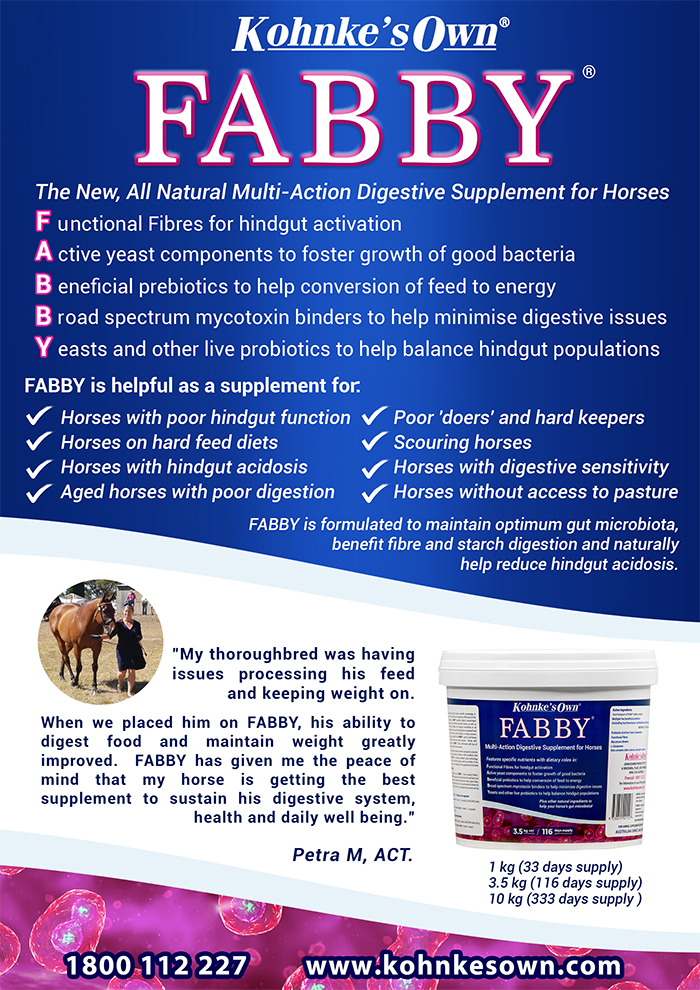
Do we think the old system of licensing stallions has outlived its usefulness? When I look at the list of famous stallions – Quidam, Mr Blue, Voltaire – these stallions were all rejected at the licensing, and when I look at a list of licensing champions, a lot of them disappeared…
“No, I don’t think so, but the studbooks are also threatened by the fact that the stallion owners are getting very big and very powerful, so that at some point they might find they don’t even need a studbook any more. That is a great danger I think because it is all business, and I think that would harm the development of the breeding.”
What can be done to protect the existing system?
“That is a big question, and I think it is hard to say. I know it is being discussed in many studbooks. We’ll have to try to be interesting to the breeders still, and we’ll have to be very focused on customer satisfaction.”

(Photo – Ridehesten)
It occurs to me that maybe the Thoroughbreds were smarter than us when they said, no artificial covering, only live covering, whereas we opened the bottle and the genie popped out…
“They can do that because they are a closed studbook. Of course if we had done that, the situation would have been completely different, but we would not have had the development that we have had. With artificial insemination, the fact that you can transport semen from one country to another, that really has had a great effect on the development, but it is also a problem because the bloodlines are getting more and more concentrated. Already now I think that is a bit of a problem.”
I think also the social factor has been lost? I can remember when I first came to Germany, the little stallion station was the hub of the community, there was a hotel and a restaurant, it was where weddings and birthdays were celebrated, people felt part of their station and their stallions, all that has been lost in thirty years. Is it the same in Denmark?
“It’s the same too, and it is a shame, really a shame, but you cannot stop development, but there were things in the old days, that were better, I think, especially the social factor.”
The other factor is the outcross… once Celle could send Grande, little, ugly, not even a nice colour – today he would not even be licensed – but the mare owners say, oh if Celle thinks he is the stallion for us, we will breed to him, then you get the new blood, the outcross, and this is a problem we confront today, just a few fashionable stallions are used and no chance for the outsider to prove himself…
“I completely agree with you.”
And it gets worse with techniques that mean you can breed to so many mares from one straw…
“You can breed five, six thousand foals out of one straw. It is a big problem and we have discussed it in our board, what can we do? The stallion owners are very concerned about that, because they sell their semen – they don’t know how it is spread around the world. It is really difficult, we have been thinking of ways to stop this, but I don’t know if it is possible at all. But it is there in the system…”
The genie is out of the bottle… And the mare owner doesn’t really know what he is buying…
“No, it is a completely new world, it has changed a lot since we met ten years ago.”
A scary world…
“In some ways yes, really scary…”
Yet we look into the arena here at Ermelo…
“And look at those horses, it is incredible what has happened. It is hard to imagine that it can continue to improve at that speed because the horses we are seeing now, are really fantastic. You can see, year after year, that the quality is going up all the time.”
Yet the other worry we have is that the mare owners are looking for novelty, they are looking for the new young stallion with the very nice brochure and state of the art website, and some of the older, proven stallions, are ignored. I am talking dressage here because the situation is reversed with the jumping breeders who want the older proven stallions, but in dressage it is a worry…
“But that is what is going to change once we get those international breeding values, it is going to be much more clear which stallions really re-produce themselves well. Those breeding values will tell us which stallions are better than the others but it will also contribute to the development where everything is getting more and more narrow. Inbreeding is going to be a great problem in the future, for sure.”
But isn’t the aim of the breeder also an issue? I see a lot of breeders who want to produce an expensive foal, or a four-year-old that can win at the Bundeschampionate, and they don’t care about big sport…
“The breeders typically sell their horses before they reach the big sport because they can’t afford to keep them all the way, so yes they want an attractive foal or a young horse.”
But are those qualities of the spectacular foal, or the four-year-old star, the qualities of a horse that can go all the way?
“Hopefully it is the same horse. I’m sure those expensive foals are bought by people who think they will go all the way, but not so many can.”
And yet the jumping breeders, to my mind, have a more sensible attitude, they really look at the results in those top classes and try to breed for them…
“There is a difference, but it is also more difficult to sell jumping foals than dressage foals, because the jumpers have to show first that they can actually jump…”
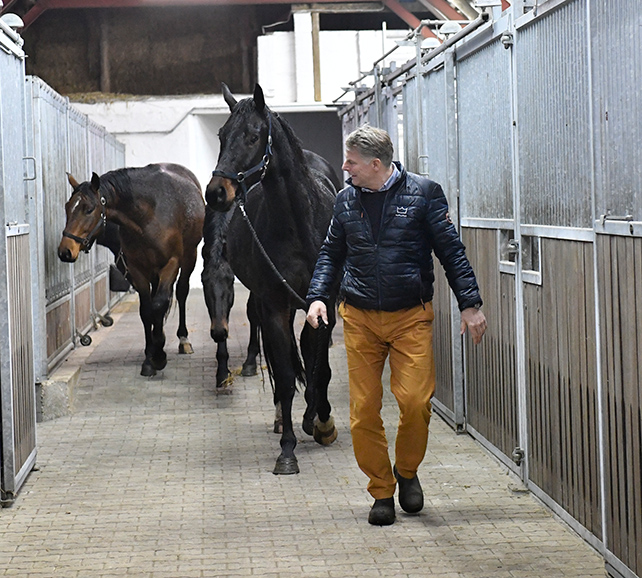
(Photo – Ridehesten)
The other thing that worries me, is the return to the breeders. I remember visiting the breeder of Hello Sanctus, he was not a rich man, yet that same week, the horse had received one million dollars for just appearing at Calgary, and then took home another million from the show, surely it would not be too hard at those five-star and above shows, for a certain percentage of the prize money to be deducted and sent to the breeder?
“That’s why we often say that the breeders are the poor people behind the sport, but we are working on that, together with Xavier Liebrecht, and we have been in contact with several of the big show organizers and we are trying to set up a system where the breeders will get part of the prize money. To me, that is only fair, and the organizers are prepared to give some of the money to the breeders. We met in Geneva two years ago with some of the big organizers and they were very positive to that idea. It is only fair, and that would be a great motivation for the breeders.”
The other thing that worries me is that the WBFSH breeders award goes to the breeder of the horse that tops the rankings, yet over the past few years there have been breeders with two horses in the top twenty, yet the award went to the breeder of a single horse. Surely it’s better to have two in the twenty, than one even if it is number one?
“You could say that system is not completely fair, but it is a question of money. I do agree that the breeder of the two horses should be in some way honoured and rewarded, to produce two horses for the top twenty is a great achievement.”
We’ve talked about the developments that you have seen in the last ten years, what are your hopes for the next ten years?
“My hope is that the studbooks will be able to survive in this crazy world. It is going to be difficult. I hope it will not only be money that makes the breeding world go round, but also passion and horsemanship. It is going to be a difficult time, and it will be a lot different in ten more years.”
We must meet again in 2029 to review the situation…
“Yes, that would be nice.”
ends
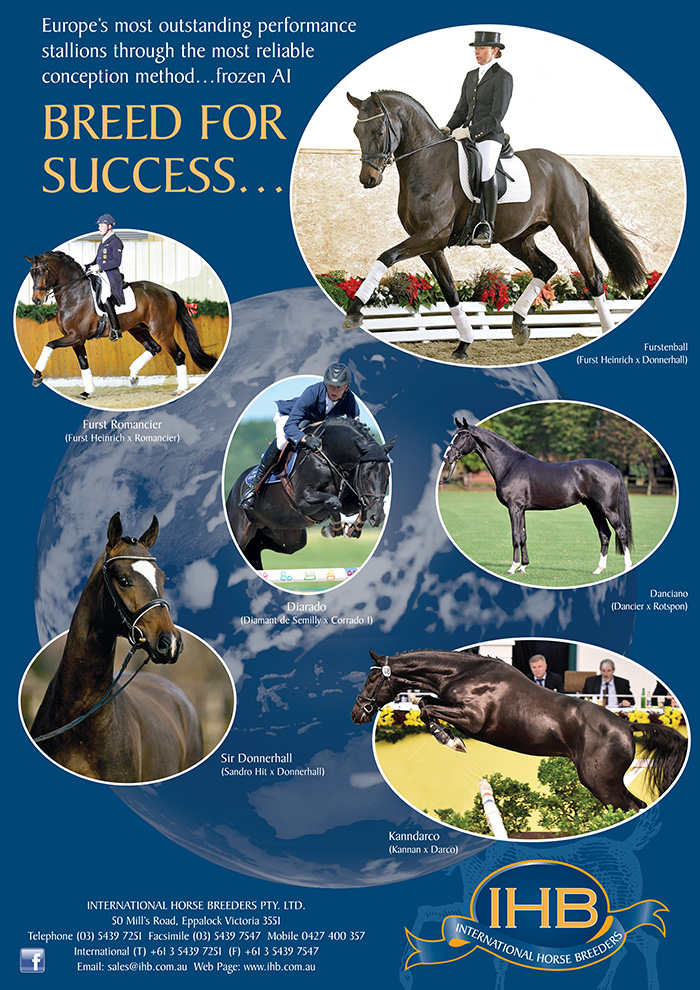

As a breeder i entirely agree ,i am a breeder of the Selle Francais ,and have small stud in Normandie ,i have just started again breeding in 2016 and stopped in 2011 ,as due to the financial crises in 2009 the market flopped .
Before it was easy to sell at weaning ,for me i have always sold at 4 years old ,this time round i shall keep them for longer ,have a record for developed experienced horse in the 3 disciplines ,and sell at 6and 7 years .
But i am in the process of purchasing another 2 breeding mares ,it is difficult but not impossible to find stallions with good traditional blood lines to keep the Selle Francais character ,so yes it is a challenge ,but fun ,luckily i am a new breeder ,having moved to France 30 years ago ,and have had a hell of a life of adventure and surprises in being with these wonderful creatures the Selle Framcais ,so like me may you all keep at it and do not let the whole breeding go to pot .Thanks Cliff longhands E mail clifford-johnlonglands@orange.fr